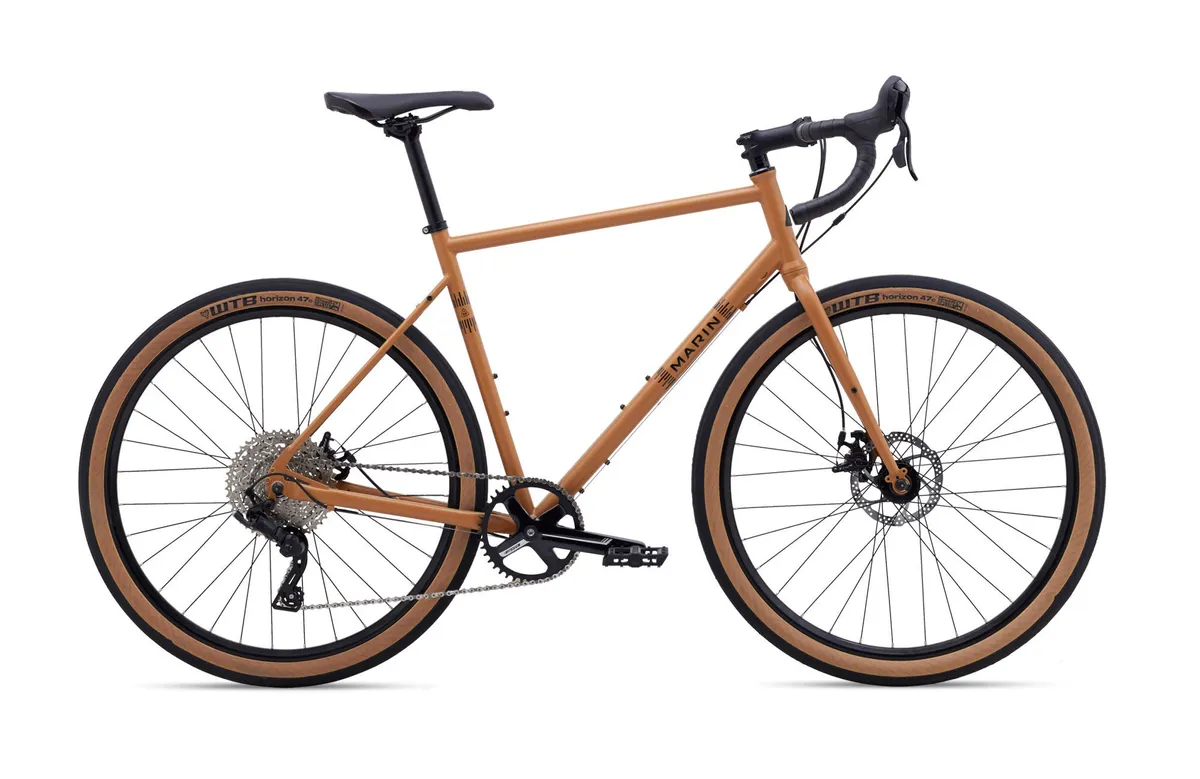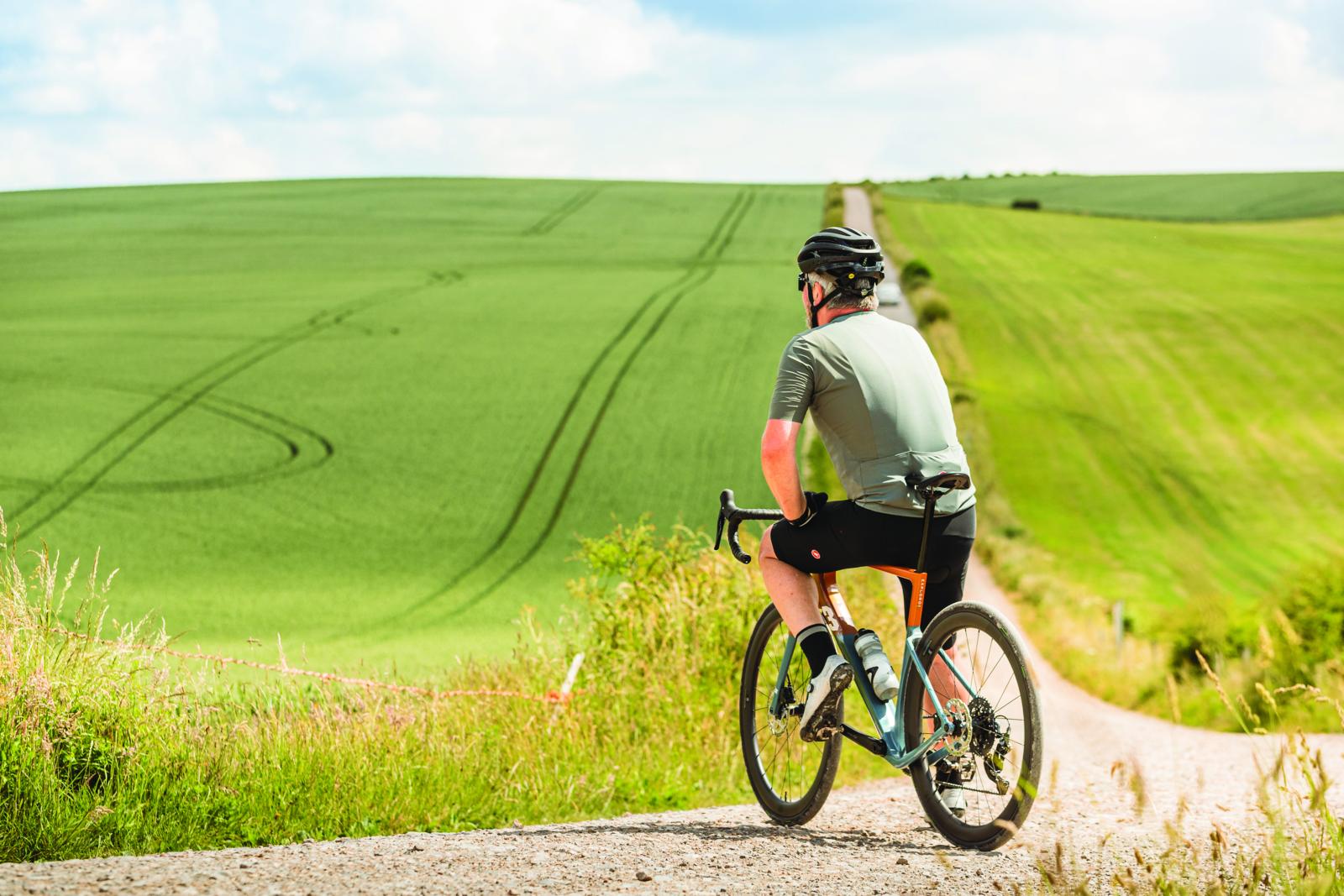I’ve been testing gravel bikes since they first appeared. In that time, I’ve learned that the price of a gravel bike isn’t commensurate with the fun you can have.
I’m in the lucky position to have been able to test some of the most expensive and exclusive gravel bikes available. Wonderful machines like the latest Cannondale Topstone, Parlee Taos, Cervélo Áspero, Specialized Crux, and many more spring to mind.
They are all wonderful bikes, with price tags to match. However, unlike most drop bar pursuits, with gravel, it’s not all about the bike.
On the road, the difference between riding a £500/$500 budget road bike and a tour-worthy race machine is huge – they have slicker gears, lower weight, a smoother ride, and are simply better all-round.
But when you remove the smooth tarmac and controlled environment of the road, those technological enhancements matter much less.
Frugal fun

In the last few weeks, I jumped from testing a lightweight carbon gravel bike with a high five-figure price tag to testing three gravel bikes around £2,000/$2,500 – a fair entry point for most serious cyclists.
I rode all three bikes on identical routes, covering a mix of gravel roads, singletrack, and root- and rock-strewn climbs and descents.
I had just as much fun on these modest machines as I did on the expensive bikes.
In fact, I’d go as far as to say that the amount of fun increased as the price decreased.
Finding a bargain bike is one thing, but taking the same bike to the extremes of what it was intended for is a real thrill.
Part of the appeal to riding gravel bikes off-road, especially into mountain bike trail territory, is that feeling of being under-biked.
Relying much more on my wits and skills (or lack of them). Those heart-in-the-mouth moments when you’ve bitten off more than you can chew are addictive, and more readily found on budget bikes.
Budget blast

Yes, a budget gravel bike will be heavier, it’ll have a simpler drivetrain and hardy wheels – but that’s the charm.
If you buy right, you’ll have just as much fun as you would if you’d re-mortgaged to get a gravel superbike, and you won’t have the financial worries to accompany it.
Plus, your heart won’t sink when you scrape and scratch something more affordable, putting a scratch or chip in a carbon frame you’ve stretched your purse strings to breaking point to buy is never nice – I speak from personal experience here.
Before you get enticed by the slick world of carbon gravel, look at the affordable alloy and steel alternatives.
Over the years, I’ve had massive amounts of fun on bikes like Marin’s bargain-priced sub £1,000 Nicasio +.
Boardman’s alloy ADVs have always been great, and the latest £1,200 ADV 8.9 blew me away with its fun factor (there’s an exclusive review on this great bike coming soon).
SQUIRREL_13150652
Bikes like Merida’s alloy Silex, Marin’s Gestalt X10, show the same sort of progressive mountain-inspired geometry as cutting-edge bikes like Mondraker’s Arid, which has now been joined by a more affordable alloy version.
SQUIRREL_13078460
Cannondale’s alloy Topstone and Specialized’s alloy Crux are both light and fast well well-priced gravel options.
SQUIRREL_13084397
SQUIRREL_13211986

Focus’s alloy iteration of the bikepacking Atlas could easily handle epic ultra-distance endeavours.
SQUIRREL_13181153

The Kinesis Tripster AT+, Genesis Fugio and Trek’s alloy Checkpoint – to name a few – are all also worthy of consideration.
A little heavier, a lot lighter on your wallet
All of those bikes will carry a few more pounds than their carbon equivalents, but save you a lot more.
You’ll have the maximum amount of fun for the minimum outlay – you’ll have the same sense of achievement nailing that rough climb or railing the corners on that technical descent on a budget bike as you will on a premium option.
Use the cash you’ve saved to invest in more tyre options to get the best out of gravel all year round, and to make a few choice upgrades to make the bike just the way you like it.
